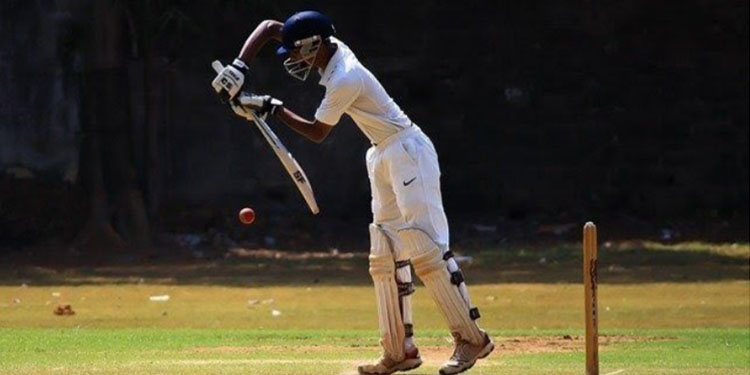
Common Cricket Injuries & How to Prevent Them
Cricket is a game that touches the hearts of most Indians; a game whosepopularity exceeds even the national game of India, i.e. field hockey; agame that every child in India aspires to play; and a game that incitespassion among millions of fans in our country. Therefore, it is not surprisingthat cricketers like Sachin Tendulkar and Virat Kohli are deified as ‘Gods’by their fans and enjoy cult status in India.
Data on injuries
But amidst all the adulation, fans forget that cricket is a physicallydemanding and stressful sport that exposes its players to variousmusculoskeletal injuries. In this direction, it is imperative to applaud acommendable effort by Rahul Dravid-led National Cricket Academy (NCA)in creating an ‘Injury Surveillance Report’ that identifies the list of mostcommon injuries among Indian cricketers. A first in its field, this 48-pagereport states that 262 cricketers (218 men and 44 women) attended arehabilitation programme at NCA between April 2019 to March 2020. Thisstatistic itself speaks volumes to the extent of injuries sustained bycricketers.
As with any other sport, cricket too is burdened by certain injuries typical tothe game. Since cricket involves variant postures for different players(batsmen, bowlers, wicket keepers, fielders etc), the injury can occuranywhere from head to toe. The insult may be acute or sudden-onset, mostoften due to traumatic injury, or chronic/long-standing issues occurringmainly due to overuse of the body.
Shoulder dislocation
The most common injury among cricketers is that of the shoulder joint andbowlers are susceptible to this type of injury. A vast majority of them arevery tall, in the range of 6-feet plus, and hence they have a long lever armmaking them more prone to rotator cuff tears, SLAP (superior labral tearfrom anterior to posterior) lesions etc.
Among acute injuries of the shoulder, traumatic dislocation is the mostcommon. It is said that Kapil Dev bowled more than 1 lakh balls infirst-class matches alone! One can only imagine the extent of damage thatthis legendary player’s shoulder joint might have sustained.
Hurting the knee & foot
The second most common joint to be damaged is the knee joint. Traumaticinjuries of the ACL(Anterior Cruciate Ligament), PCL (Posterior CruciateLigament) and multi-ligament injuries are common acute conditions. Amajority of career-threatening ACL injuries have been found to occur in thefirst two years of “return to sport”. Chronic overuse results in adegenerative meniscal tear that presents with excruciating knee painaccompanied by mechanical symptoms (painful clicking, popping, locking,catching, and giving way) but with no known traumatic event.
Ankle, thigh and lumbar spine are among the next most susceptible jointsto be injured among cricketers. During the delivery stride, the bowler’s foottouches the ground with a force of nearly 7-8 times the body weight.
Plantar fasciitis, Achilles tendinitis, retrocalcaneal bursitis, metatarsal andtoe fractures, stress fractures of the foot are some of the common injuriesafflicting the ankle joint.
Pulling the hamstring
Hamstring strain in the back of the thigh is a tear in the muscle that mostcricketers are prone to regardless of their position. It often occurs duringsudden, explosive movements, such as sprinting, lunging or jumping, andis very common, especially in batsmen and fielders.
Disc diseases, lumbar spondylosis and disc prolapse are some of the majorproblems of the spine and are most frequently seen in bowlers.
Overuse injuries
This is not to imply that other joints and muscles are spared. Tennis elbow,for example, is a common condition in both bowlers and batsmen, involvingpain on the lateral side of the elbow. In fact, Sachin Tendulkar himself hasbeen treated for this condition. In small joints like the wrist and fingers,ailments like small joint degeneration, overuse tendon injury are found –mostly in spinners due to inappropriate grip on the ball. Other injuriesinclude TFCC (Triangular Fibrocartilage Complex) injury and mallet finger.
Periostitis or runner’s disease is a chronic exertional compartmentsyndrome of the leg caused due to repetitive stress on the tibia, orshinbone. Amidst others, this disease underscores the need for the use ofproper footwear in cricket. It is estimated that Sachin ran a distanceexceeding 350 km in between wickets! Hence, there is little surprise thatcricket is associated with manifold stress and strain injuries of themusculoskeletal system.
How to prevent injuries
Sports injuries might beunavoidable under certaincircumstances but players needto remember that prevention isbetter than cure. Learning thecorrect technique for individualsports under a trained person,and adopting safety measurescan definitely go a long way in preventing sports injuries. Players should do warm-ups and general stretching exercises, along with stretching exercisesspecific to the game, before indulging in the sport.
Each sportsperson must know his or her own body limits and take care notto over exert themselves. After each game, a warm-down period is crucialand players should give importance to maintaining hydration as well asgood sleep. Adequate relaxation and unwinding oneself in between trainingsessions are equally vital.
Managing injuries
If injured, the player should avoidself-medication and self-treatment.Instead, he or she shouldimmediately seek the help of aqualified medical professional. Mostinjuries are amenable to treatment,and with competent management,normal anatomic and biologicfunctionality of the joint can beregained to the satisfaction of the player. These facts are relevant not justfor those in sports but for the common public too. One should never delaygetting help for any problem lest it turns from a minor discomfort to aleviathan one.
Now that the IPL has begun in the UAE, cricket is in the limelight onceagain. Let us take this moment to reflect that it is not only important to ‘playwell’ but also to ‘play right’ — play using the right technique, and if injured,get the right treatment at the right time, from the right expert.

Dr. Nijith O Govindan (BPT, MBBS, MS Orthopaedics)
Consultant Orthopaedic Surgeon
Lakshmi Group of Hospitals, Cochin, Kerala, India – 682 016
Phone: 9475601731
